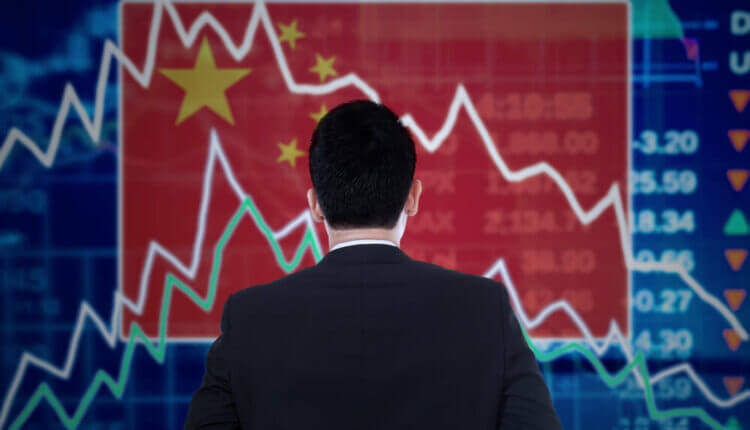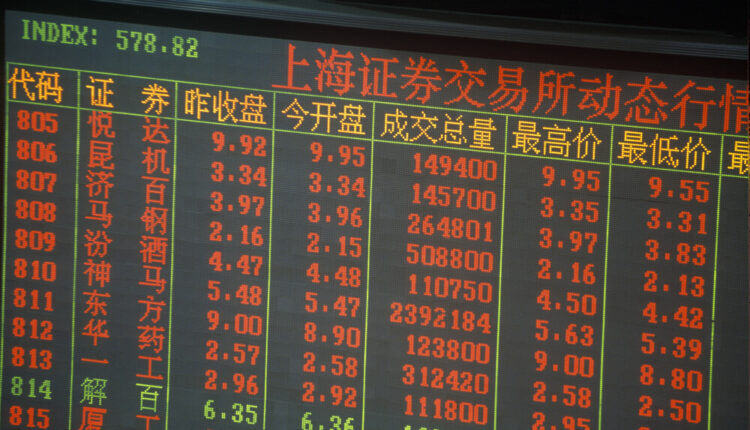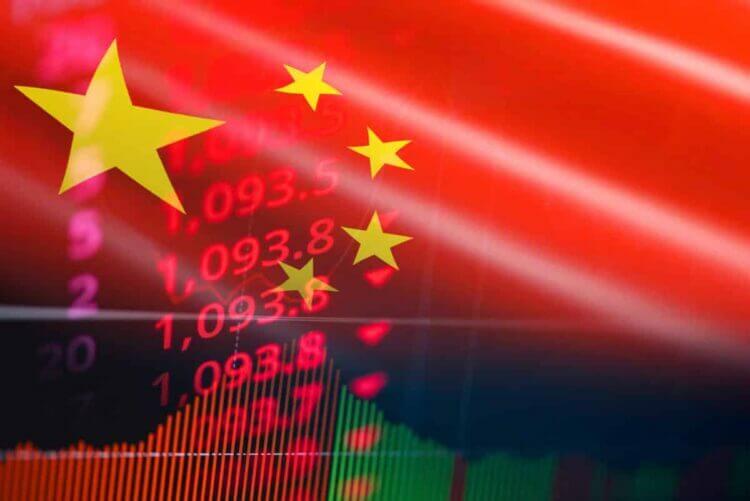
Inflation in China: Economic Impact and Analysis
The Chinese inflation rate slightly increased by 0.2% in June compared to the same month a year ago. This figure was lower than the forecasts while the prices of the factories related producer did not change as expected.
The government of China has planned to bring back the consumption trend after the episode of uncertain post-COVID period, but there are still worries regarding more deep-seated factors such as a housing crisis and job insecurity. This situation has led to the fall in consumer and industrial activity and has also resulted in demands for more effective policies.
The consumer price index (CPI) in June increased by 0.2% compared to the same time last year, down from a 0.3% increase in May—the lowest in three months—according to the National Bureau of Statistics. This was below the estimated 0.4% increase. Meanwhile, deflation remains a significant challenge that China continues to grapple with.
China’s Inflation Expectations
China’s inflation rate remains at 0.2% Year on Year. In June, China’s CPI inflation fell to a 0.2% Year on Year rate which is a 3-month low record on the back of a softer-than-anticipated non-pork food price, however, it was in the positive territory for the fifth consecutive month.
China witnessed a very slight contraction in its June consumer price index, which was a 0.2% YoY compared to 0.3% YoY, and that was also below the visualized outcomes of 0.4% YoY. Consumer prices remained almost untouched in the last four months, with the rates changing from 0.1-0.3% YoY. The CPI inflation shrank monthly in June to -0.2% and it was the second decrease of consumer prices monthly.

Several Factors of China’s Inflation
- Food prices (-2.1% YoY) were seen experiencing a more severe-than-expected fall of -2.1 year-on-year in the month of June. The contribution to this was the bigger drag from vegetables (-7.3%), fruits (-8.7%), as well as beef (-13.4%) and mutton (-7.1%), which offset a strong recovery of pork prices (18.1%). The pork cycle is pretty much happening as predicted, but the hold-up from other food prices has been staying with us permanently.
- Non-food inflation (0.8% YoY) remains the major cause of decreases in many items. Besides the three categories already mentioned, vehicles (-5.3%), household appliances (-1.3%), and communications devices (-1.5%) are among the most significant culprits of the decline in the non-food inflation. At the same time, rents (-0.2%) dived into further negative land.
Weak consumer confidence still drives purchases of value-for-money and cheaper electric vehicles (EVs) as competition in the EV space continues together with overall inflation.
The read of the Producer Price Index in May was a little more advantageous showing that the PPI inflation rate contracted by -0.8% YoY which was higher compared to -1.4% YoY in May and it reached its peak in 17 months.
The fall of producer prices ran for the 1st month in September 2022, but it may step out of deflation during the 2nd part of 2023, based on the current pattern.
China’s Inflation Rate Expectations in the Second Half of the Year
During the first semester of the current year, China’s CPI inflation barely increased, achieving a commendable level of just 0.1% YoY. This minimal rise was primarily due to the -2.7% YoY drop in food and energy prices, which significantly impacted the headline figure.
The development has not performed as well as the education sector with food prices decreasing 0.8% YoY, while non-food inflation increased by 0.8% YoY in the first part of the year, the inflation rate is still way below the usual 2% inflation target.
The future will see the rise in price inflation which will be somewhat gradual in the second half of the year as predicted by analysts.
The economic picture of China is a somewhat bleak one with low inflation and lackluster consumer loans data, which is a convincing argument in support of the PBOC’s decision to drastically revalue its currency in the upcoming months.
Sales of Chinese stocks remained flat on July 10, 2024, after unexpected higher margins of inflation in June alongside the non-uniform performance of sectors and the markets abroad sent out partly good, partly bad signals indicating investors’ views.
The latest report on China’s inflation data trends has brought disappointment to the markets, which saw that consumer prices have risen for five months in a row, although the figures were at the bottom end of expectations.
China Economy News
The financial status of China scrutinises due to the damage coming to light as it is coping with the problems of recovery and rising prices. Central bank interventions and government relief measures play a crucial role, as global markets anticipate the Federal Reserve to begin its easing cycle in September.
However, if the US cuts the rates, increased capital flows into markets such as China might take the place of the generators of growth which are however domestically disadvantaged. Acquaintance of these global economic shifts is a must for companies and government in setting their strategies ahead.
China’s inflation stayed below the expectation as the consumer price index gained by 0.2% in June, which is lower than the rise of 0.4%.
The most successful of China’s companies, which have traditionally made billions of dollars in revenue, seem to have at last lost their grip on the Chinese market. Alibaba Group’s Tmall and Pinduoduo, which according to the retail data provider Syntun is the first decrease of the last eight years, and retail data provider Syntun’s study reveals that in the last eight years Alibaba Group’s Tmall and Pinduoduo encountered the first sales slump, which was estimated at 8% and led to a decrease in sales for the first time.
The shopping festival, which, scale-wise, compares only to the November 11 Singles’ Day festival, brought in $102.3 billion worth of sales this year. This was a 7% drop compared to 2023, when the 618 sales raked in about $109 billion.

Economic Factors in China’s Inflation Rate
One of the major impacts of the economic downturn is that many people want to avoid paying premiums as much as possible. The uncertainty about the future also makes them want to save for a rainy day. International reports indicate that China’s youth unemployment was at 14.9% as of December, a figure confirmed by the National Bureau of Statistics in China.
The average per capita income of the Chinese people in January to March 2024 was $905, estimating the National Bureau of Statistics of China. China is in a real estate crisis, which predicts to become several times worse, because of which consumer confidence is still down.
Typically, in May, the prices of new homes went down for the first time in about ten years. The National Bureau of Statistics’ data was that the sale price of a new abode in 70 large Chinese municipalities had inched down by 0.7% as of the previous month’s level. The Shanghai Composite Index lowered by 0.33% to 2,949.66 points by midday, on the other hand, the blue-chip CSI300 grew by 0.01%. Financial and consumer staples sectors witnessed only modest strides while real estate and some tech shares demonstrated weakness.
China Inflation Rate Below Forecasts
The increase in the annual inflation rate in China slowed to 0.2% in June 2024 from 0.3% in the preceding two months, which was not in line with the predictions of the market that were of 0.4%. It was the fifth month in a row when the inhabitants had inflation, but the amount was the smallest since March with a difficult economic recovery. The price of food deteriorated for the twelfth time (-2.1% versus -2.0%) despite the highest increases observed in the pork price during the Dragon Boat Festival.
Meanwhile, non-food inflation remained unchanged at 0.8%, but textile prices increased. Clothing prices rose by 1.5% (vs. 1.6% in May), housing by 0.2% (vs. 0.2%), health by 1.5% (vs. 1.5%), and education by 1.7% (vs. 1.7%).
On the other hand, transportation fares continued to decrease, dropping by 0.3% (vs. -0.2%). Earlier this year, the Chinese government ordered some workers to increase their utility costs, which resulted in only a slight impact, barely affecting other parts of the economy.
The post Inflation in China: Impacts and Expectations appeared first on FinanceBrokerage.

